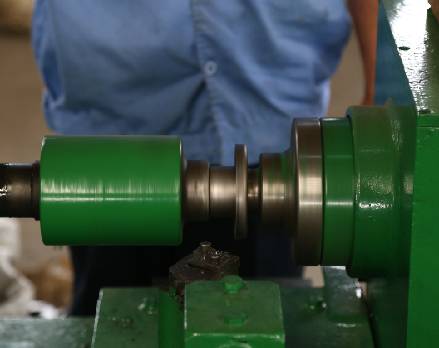 Afrikaans
Afrikaans  Albanian
Albanian  Amharic
Amharic  Arabic
Arabic  Armenian
Armenian  Azerbaijani
Azerbaijani  Basque
Basque  Belarusian
Belarusian  Bengali
Bengali  Bosnian
Bosnian  Bulgarian
Bulgarian  Catalan
Catalan  Cebuano
Cebuano  Corsican
Corsican  Croatian
Croatian  Czech
Czech  Danish
Danish  Dutch
Dutch  English
English  Esperanto
Esperanto  Estonian
Estonian  Finnish
Finnish  French
French  Frisian
Frisian  Galician
Galician  Georgian
Georgian  German
German  Greek
Greek  Gujarati
Gujarati  Haitian Creole
Haitian Creole  hausa
hausa  hawaiian
hawaiian  Hebrew
Hebrew  Hindi
Hindi  Miao
Miao  Hungarian
Hungarian  Icelandic
Icelandic  igbo
igbo  Indonesian
Indonesian  irish
irish  Italian
Italian  Japanese
Japanese  Javanese
Javanese  Kannada
Kannada  kazakh
kazakh  Khmer
Khmer  Rwandese
Rwandese  Korean
Korean  Kurdish
Kurdish  Kyrgyz
Kyrgyz  Lao
Lao  Latin
Latin  Latvian
Latvian  Lithuanian
Lithuanian  Luxembourgish
Luxembourgish  Macedonian
Macedonian  Malgashi
Malgashi  Malay
Malay  Malayalam
Malayalam  Maltese
Maltese  Maori
Maori  Marathi
Marathi  Mongolian
Mongolian  Myanmar
Myanmar  Nepali
Nepali  Norwegian
Norwegian  Norwegian
Norwegian  Occitan
Occitan  Pashto
Pashto  Persian
Persian  Polish
Polish  Portuguese
Portuguese  Punjabi
Punjabi  Romanian
Romanian  Russian
Russian  Samoan
Samoan  Scottish Gaelic
Scottish Gaelic  Serbian
Serbian  Sesotho
Sesotho  Shona
Shona  Sindhi
Sindhi  Sinhala
Sinhala  Slovak
Slovak  Slovenian
Slovenian  Somali
Somali  Spanish
Spanish  Sundanese
Sundanese  Swahili
Swahili  Swedish
Swedish  Tagalog
Tagalog  Tajik
Tajik  Tamil
Tamil  Tatar
Tatar  Telugu
Telugu  Thai
Thai  Turkish
Turkish  Turkmen
Turkmen  Ukrainian
Ukrainian  Urdu
Urdu  Uighur
Uighur  Uzbek
Uzbek  Vietnamese
Vietnamese  Welsh
Welsh  Bantu
Bantu  Yiddish
Yiddish  Yoruba
Yoruba  Zulu
Zulu drive pulley and driven pulley
Understanding Drive Pulleys and Driven Pulleys
Pulleys play a crucial role in mechanical systems, providing an efficient means of transferring power and motion. Two of the most fundamental components in these systems are the drive pulley and the driven pulley. Understanding their functions and how they interact is essential for engineers and technicians alike.
A drive pulley is typically connected to a power source such as a motor or an engine. Its primary function is to receive energy from this power source and convert it into rotational motion. Drive pulleys come in various sizes and materials, optimally designed to handle specific loads and speeds. The diameter of a drive pulley affects the speed and torque that can be transmitted; larger pulleys will generally rotate slower but with greater torque, while smaller pulleys will rotate faster with less torque.
In contrast, the driven pulley is connected to the component that does the work, such as wheels, conveyor belts, or other machinery. The driven pulley is influenced by the rotational movement from the drive pulley through a belt, chain, or rope that links the two. The configuration of the pulleys determines the overall efficiency of the system, including acceleration and force transmission.
The interaction between the drive and driven pulleys is governed by the principles of mechanics. When the drive pulley rotates, it causes the belt or chain to move, which in turn makes the driven pulley rotate. The direction of motion, speed, and torque can all be modified based on the size ratios of the pulleys. For instance, if the drive pulley is significantly larger than the driven pulley, the driven pulley will rotate faster while transferring less torque and vice versa.
drive pulley and driven pulley

One of the great advantages of using pulleys is the mechanical advantage they provide. By carefully selecting the sizes of the drive and driven pulleys, operators can tailor a system to optimize power transfer, enhance efficiency, and minimize wear and tear on components. This is particularly important in industrial settings where machines operate continuously and any downtime can result in significant financial losses.
In addition to size, the material of the pulleys and belts also plays a pivotal role in the functionality and longevity of the system. Materials must be selected based on multiple factors, including the environmental conditions (e.g., temperature, exposure to chemicals), load requirements, and wear resistance.
Maintenance of both drive and driven pulleys is paramount to ensure optimal performance. Routine inspections should include checking for wear on belts, alignment of pulleys, and any signs of damage. Neglecting these checks can lead to system failures, decreased efficiency, and costly repairs.
In conclusion, the relationship between drive pulleys and driven pulleys is central to the function of many mechanical systems. Their design, interaction, and maintenance can significantly impact efficiency and reliability in various applications, from simple machinery to complex industrial processes. Understanding these elements allows engineers and technicians to design better systems, troubleshoot effectively, and innovate for the future. By leveraging the fundamental principles of drive and driven pulleys, industries can achieve improved performance and sustainability.
-
Revolutionizing Conveyor Reliability with Advanced Rubber Lagging PulleysNewsJul.22,2025
-
Powering Precision and Durability with Expert Manufacturers of Conveyor ComponentsNewsJul.22,2025
-
Optimizing Conveyor Systems with Advanced Conveyor AccessoriesNewsJul.22,2025
-
Maximize Conveyor Efficiency with Quality Conveyor Idler PulleysNewsJul.22,2025
-
Future-Proof Your Conveyor System with High-Performance Polyurethane RollerNewsJul.22,2025
-
Driving Efficiency Forward with Quality Idlers and RollersNewsJul.22,2025





























